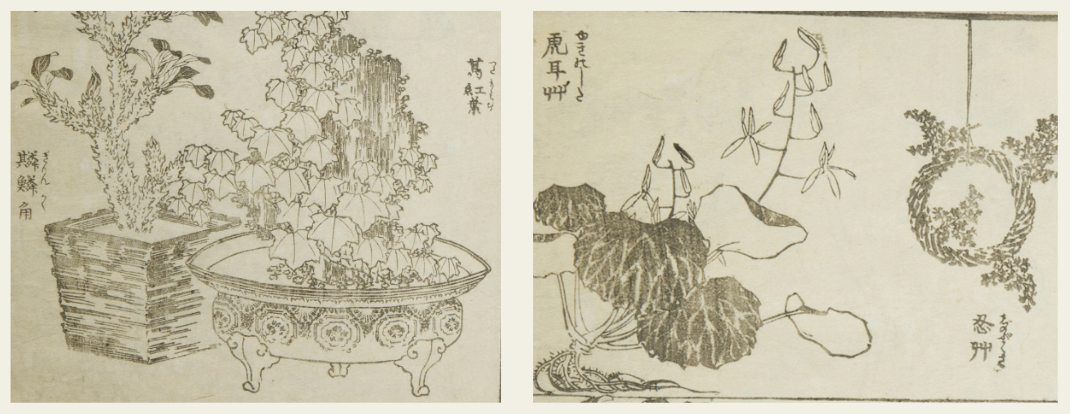Overview
Students will reflect on their artmaking using the close looking, speaking, writing, and/or sketchbook prompts.
Materials and Tools
- Pencil
- Sketchbook or 1 piece of paper
- Drawing from the previous lesson
Activities
Note: The following activities are written with sample language you may use with your students. Following the art-making lesson, you may choose as many reflection activities as desired for students to work on in class or independently.
Explain to students that the slides they see during the lesson will be shared with them so they may review the lesson on their own and continue to make more art.
Step 1: Close Looking at Student Artwork (10 minutes)
Hello Artists! Today we are going to continue exploring marks and visual texture. Take a look at the drawing you made in the previous lesson.
- What did you notice when you looked closely at the object?
- How can you describe the texture?
- What marks, lines or shapes did you repeat to create that texture?
- What else do you know that has a texture like this?
Step 2: Close Looking: Katsushika Hokusai (10 minutes)
Let’s take a close look at the two artworks by Katsushika Hokusai to begin.
Note to Teachers: Before teaching with a work of art, spend some time looking closely on your own. Familiarizing yourself with the artwork will prepare you to guide the close looking activity.
If your students are new to looking at art together, you can introduce the activity to students in the following way:
Today we are going to spend some time looking at and discussing a work of art together. When we look at art, there are no right or wrong answers. I’m going to ask you to look closely, share your ideas about what you see, and listen respectfully to others’ ideas. Everyone’s ideas are important. We all see things differently and when we look at art, we can learn to see through each other’s eyes.


Discuss with a partner, the class, or a grown-up:
- Imagine you can touch one of these drawings.
- What do the different parts feel like?
- What kinds of marks, lines or shapes did the artist use to create each texture?
Step 3: Sketchbook Activity (10-15 minutes)
We’ve been focusing on objects found in nature, but did you know that textures can be found everywhere? Look around you to find other objects with interesting textures. Choose an object with texture that is important to you.
What is the object? Why is it important?
What texture does it have? How does it feel if you touch it? Do all the parts feel the same?
Draw the shape of your object to fill the whole page in your sketchbook. Then, zoom in on the texture.
How will you create the visual texture? Draw lines and marks to show how it feels.
Model choosing an object and discussing its meaning to you, then ask students to help you identify the texture. Model identifying and drawing the outer shape of the object, asking students for suggestions. Then, ask students for suggestions on how to draw the object’s visual texture, using marks, lines or patterns.
Now it’s your turn. What object will you draw? How will you create the visual texture of this object?
After students finish their drawings, ask: How was this different from drawing the visual texture of natural objects?
Step 4: Writing Activity (10 minutes)
Now we are going to write about the object you drew in your sketchbook. Write your answers to the following questions:
What object did you draw?
Why is this object important to you?
What does your object look like?
What texture does it have?
What lines and marks did you draw to create the visual texture?
Based on your students’ writing skills, choose from the options below.
Option 1: Write short sentences to describe your object.
For example:
I drew a blanket that is important to me because my mom gave it to me.
It is the color purple and is square shape.
The texture is soft and fuzzy.
I used light and dark curved and curly lines to create the visual texture.
Option 2: Use the sentence frames and vocabulary list below to write 2 sentences about your artwork.
I drew a ________ that is important to me because ______________________.
It is the color ________ and is a ________ shape.
The texture is ________. I used ________ lines and ________ marks to create the visual texture.
Option 3: Label the texture of the object and the lines, marks and/or patterns that you used to create the visual texture in your sketchbook.
Resources



Examples of Textures of Natural Objects
Katsushika Hokusai. Picture Album Transmitting the Spirit: The Hokusai Drawing Style. 1819, Woodblock printed book; ink on paper, 10 ¼ x 6 ¾ in. The Metropolitan Museum of Art, New York. https://www.metmuseum.org/art/collection/search/78795
National Gallery of Art Texture Lesson
Explore looking at texture in works of art and creating texture using different media: https://www.nga.gov/learn/teachers/lessons-activities/elements-of-art/texture.html

